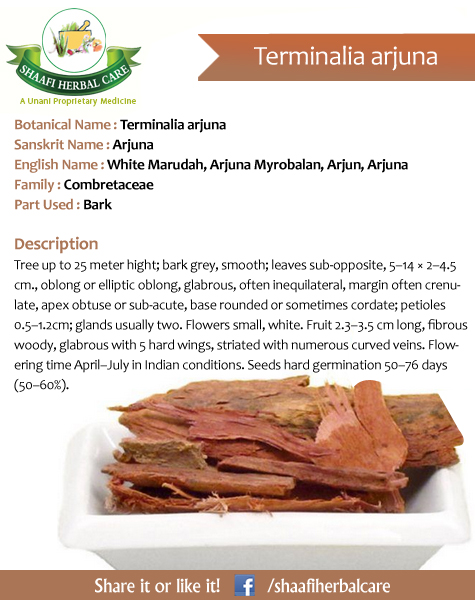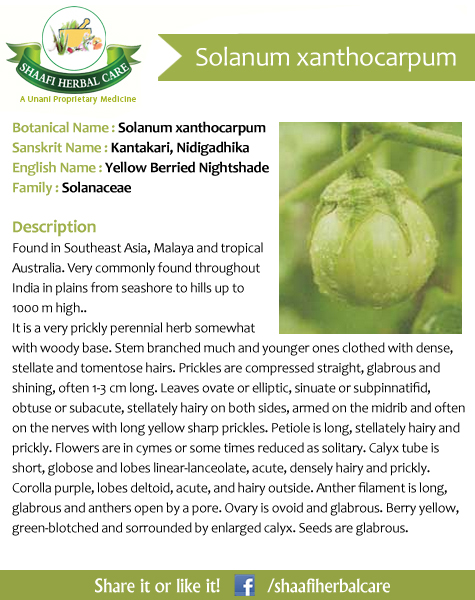General information: Belliric Myrobalan is known as Vibhitaki in Sanskrit, which means ‘fearless’. In Indian folklore, it is said that demons inhabited the Belliric Myrobalan tree and those who sat under its shade were vulnerable to an attack. Belliric Myrobalan is one of the three key ingredients of Triphala, a natural compound that provides overall …
Terminalia arjuna
Health Benefits and Therapeutic Uses of Arjuna One of the health benefits of the arjuna herb is that it is known to be effective against the symptoms of asthma and can even cure the individual of this medical problem. As part of the natural treatment for asthma , the arjuna bark powder should be mixed …
Tephrosia purpurea
General information: The Sanskrit name of Wild Indigo, Sarapunkha, is a combination of two words—arrow and wings. This refers to the physical appearance of the plant. If both the ends of its leaf are held and pulled, edges like that of an arrow are formed (Source: The plant is beneficial in treating skin eruptions and …
Tecomella undulata
General information: The Rohida Tree’s Sanskrit name, Rohitaka, means ‘the healer’, which refers to the herb’s therapeutic benefits. The tree’s extracts are known to be useful in healing liver and spleen ailments, superficial wounds and blood disorders. Therapeutic constituents: The bark of the Rohida Tree contains tecomin (veratryl beta-D-glucoside), alkanes, alkanols and beta-sitosterols, which denote …
Tamarix gallica
General information: Tamarisk, which is found in abundance in North India, has laxative and antihemolytic properties. The herb is often administered for constipation. Therapeutic constituents: Tamarixin is the main chemical constituent of Tamarisk, which gives the herb its therapeutic properties. Key therapeutic benefits: As a laxative, Tamarisk is beneficial in the treatment of constipation. It …
Tamarindus indica
Health benefits of Tamarind Tamarind fruit contains certain health benefiting essential volatile chemical compounds, minerals, vitamins and dietary fiber. Its sticky pulp is a rich source of non-starch polysaccharides (NSP) or dietary-fiber such as gums, hemicelluloses, mucilage, pectin and tannins. 100 g of fruit pulp provides 5.1 or over 13% of dietary fiber. NSP or …
Symplocos racemosa Roxb
General information: Lodh Tree bark has been traditionally used as an uterine tonic. Numerous references attest to its value in maintaining optimum health in women. Additionally, the tree and its formulations have been effective in controlling bleeding and digestive disorders. Therapeutic constituents: Glycosides, isolated from the ethanolic extract of the stembark, are highly astringent and …
Swertia Chirata
Fevers – Swerita is well known for swiftly lowering fevers from colds and flues. Skin Disease – Swerita is great for rashes, inflamed skin, and other types of skin problems. Also works well when mixed with water for wound cleansing and healing… and it’s great for oozing skin. Anti-Inflammatory – Swerita is a powerful …
Strychnos Nux-vomica
Description of Strychnos Nux-vomica: A medium-sized tree with a short, crooked, thick trunk, the wood is white hard, close grained, durable and the root very bitter. Branches irregular, covered with a smooth ash-coloured bark; young shoots deep green, shiny; leaves opposite, short stalked, oval, shiny, smooth on both sides, about 4 inches long and 3 …
Solanum xanthocarpum
Description Kantkari, botanically known as Solanum Xanthocarpum, is a very spiny diffused herb, with a height of up to 1.2 meters. The young branches are densely covered with minute star-shaped hair, while the mature branches are zigzag, covered with yellow, sharp shining prickles and spread close to the ground. The midribs and other nerves of …









